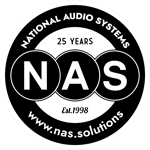School News, New Zealand: Encouraging creativity and collaboration with AV
By Gemma Easton, Editor of School News, New Zealand. Published in the Term 1, 2024 edition.
Appropriate audio-visual equipment in schools can help foster collaboration, interactivity, communication and creativity.
A broad suite of AV equipment is available to schools, including audio systems, recording and streaming equipment, AV control systems, as well as touchscreens, interactive projectors and whiteboards. Not all of these items will be necessary for every school, though some key items would prove useful.
Classroom
In the classroom, audio visual aids are important tools for the learning process. Not everyone absorbs and processes information in the same way, so presenting information differently will help more students to understand and retain it. Visual aids such as PowerPoint slides and video clips can bring ideas to life and help students see things for themselves without leaving the classroom.
Conventional ‘writing on the whiteboard’ style of lessons can become more engaging with AV equipment. Interactive whiteboards and projectors make it easy to imbed links for students to explore videos or articles about the topic under investigation. Including graphics like graphs, tables and images provides visual aids which will help some students more easily grasp concepts.
For students with different learning needs, AV equipment can help accommodate their learning. Sound amplification, large font, soothing sounds and gamified learning can all make accessing classroom activities easier.
Listening to background music while learning can help students relax, focus and improve their mood. This can mean students are more motivated to keep going with their schoolwork, and less likely to become distracted.
There is some evidence to suggest that listening to music improves your memory, which would be beneficial when introducing students to new material. Installing speakers in classrooms or study spaces like libraries will allow teachers to play music for students throughout the school day.
Multimedia approaches to classroom projects and assessment are becoming increasingly common. Students are oft en encouraged to incorporate a range of media into their work, including video, images, and music, as well as a written script. Having a suite of audio-visual equipment available to students will ensure they have the necessary tools to produce an effective multimedia project.
Microphones, video cameras and audio recorders can all help students create professional quality projects. Equipment should be easy to use and easily transportable so it can be used by different students in a range of spaces around the school.
Recording equipment is also useful for capturing student work for later review, or to be shared with other classes or the student’s family. Software solutions are available to help with editing and distributing recorded content.
Diagram courtesy of Edwards Sound, Lighting and AV
Collaboration
Students and teachers are no longer expected to work in silos, focussing on their own work alone. Audio visual solutions can facilitate collaboration, allowing students from different classrooms and year levels to work on a common project. Students can also access content from home, ensuring they do not miss out on key learning activities if they are unable to come to school.
For teachers, collaboration is becoming increasingly common. Sharing lesson plans and developing these as a team can help ease the workload for individual teachers, and ensure cohesion of learning activities across a cohort. Audio visual equipment can also help teachers meet virtually. Cameras and audio equipment make meeting from different parts of the campus, or while at home, possible, allowing for greater flexibility around meeting times.
AV equipment can also allow guest presenters and speakers to virtually visit classrooms. A guest could address a class, year level or entire school via video link. Students could watch this all together, or at different times in smaller groups. Having the necessary equipment to record and distribute this content at the school will make this process simple.
Communication and creativity
Exciting opportunities with audio visual equipment may include student produced podcasts and video news bulletins, and professional quality support at school performances. For students hoping to pursue a career in the media, familiarity with producing, editing and distributing content could prove particularly useful.
Conflicting schedules mean it is often difficult for parents to attend events during school hours, such as award presentations and class performances. The ability to livestream events, or record and then distribute later means families can enjoy these events without having to be there in person. This can also help alleviate pressure on small venues – people who miss out on tickets to an event can watch a recording of the event.
Having the necessary equipment to facilitate this onsite can be a substantial cost saving for schools, as external providers will not need to be hired to record the event. Tasking students with managing the livestream, or editing a recording, will help build their skills while working on a practical, real-world project.
Adding a regular podcast or video newsletter to your communication suite could help foster stronger connections between schools and families. Delivering information in different formats can, in some instances, make it more accessible to members of your community.
Key considerations for AV solutions
Euan Mackenzie from NAS says audio visual systems in schools can encompass LED walls, microphones, amplification, and control systems. “By prioritising scalability, ease of use, and training for educators, schools can create immersive learning environments.”
“Defining the application of the system is key, to ensure that it meets the diverse needs of classrooms, auditoriums, and outdoor spaces. Will it be used as a creative learning tool, local and remote classroom, for presentations, or for performing arts applications?”
“Schools can create, capture, and store educational content for on-demand access, fostering a culture of continuous learning. Live performances, guest lectures, and events can be recorded and streamed externally, reaching a wider audience and enhancing community engagement.”
An AV control system is an indispensable tool for schools seeking to create immersive and interactive learning environments.
“These systems can seamlessly integrate audio-visual elements, allowing educators to deliver dynamic and engaging lessons. To maximise the potential of these systems, schools should invest in robust and intuitive systems, empowering them to harness the full capabilities of AV technology.”
Jonathan Neil from Edwards Sound, Lighting and AV says while often regarded with trepidation, correctly implemented AV puts the fun back into school plays and assemblies, with crystal-clear audio and vibrant visuals that leave audiences spellbound, rather than feeling embarrassed for the AV person.
“AV tech goes beyond amplifying voices and displaying images. From an ‘intelligent’ wall plate that detects the device connected and automatically adjusts projector settings, rolls down the screen, and readies the room for presentations to a fully automatic and comprehensive touch-screen system controlling everything including the lighting.”
And Mr Neil stresses that AV components are not just a nice-to-have convenience; they’re game-changers. “Presets for assemblies, plays, lessons and for outsiders using the hall ensure smooth transitions and consistent quality. A butt on labelled ‘START’ resets everything to how the manufacturer intended it to be used.
“Choosing a stable supplier with strong backup capabilities is crucial, and training is key. Yes, the systems can be easy to use, but ensuring staff are comfortable knowing where to start using the systems allows them to focus on what matters most - teaching and learning.”


